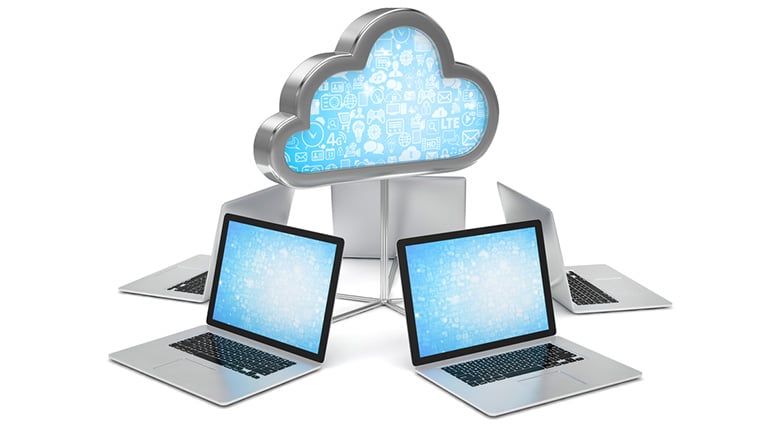Planning for LMS Migration? Here’s a 7-Point To-Do List!

We always want things around us to get better. Be it our business, the technology we use, or the way we acquire knowledge. Then why not the Learning Management System (LMS) we use to deploy eLearning? We are in a new era where the way people acquire knowledge has changed. A knowledge-rich lifestyle has emerged that serves the immediate information requirements of learners. This shift has brought in a need to move beyond the traditional LMS.
LMS Migration 7-Point Checklist
- Communicate the change
- Engage the right resources
- Choose the migration method
- Plan the migration process
- Conduct a pilot run
- Migrate data
- Conduct quality checks
It’s time to adapt a next-generation LMS with advanced features that facilitate mobile compatibility, seamless scalability, collaborative learning, and easy administration. If you are planning to migrate from your old LMS that focuses on the administrator instead of the learner to a learner-centric platform, here’s a to-do list that will ease your LMS migration process.
LMS Migration To-Do List
1. Communicate the Change
For a global company, the most common challenge associated with LMS migration is the effective communication of the migration process among employees. So have a robust communication strategy that would give them a taste of the actual product and grab their attention. Since you are planning to implement a new LMS and expect employees including the LMS administrator and the senior management to work on it, the need for change has to be communicated way before you begin the migration process.
Explain to them the features of the new learning portal and how adopting it will benefit their job roles. Let users know why there is a sudden change to a new LMS and the challenges with old LMS the new system is going to address.
2. Engage the Right Resources
The LMS migration process might look daunting unless you have the right team with expertise in migrating LMS data. You are fortunate if you have the right number of in-house experts who can guide you through the migration. Otherwise, outsource your migration project to a vendor partner who can support your migration needs.
Look for a vendor who can not only cater to your modern learning requirements but also assist you throughout the migration journey from feature mapping and data cleaning, to efficiently migrating data from the old to the new learning platform with all existing data right in place and ready to use.
3. Choose the Migration Method
The major step involved in migrating from an old to new training delivery system is data migration. You need to map the features of your new learning platform with that of the old one, do a true data clean-up and migrate relevant data to the new LMS. Data migration is quite a time-consuming process. There are essentially two options you can choose from depending on whether you can keep your system down for a couple days or not.
i. Big Bang Migration
Big bang migration is a tried and tested approach that migrates the entire data from an old training delivery system to the new within 2-3 days. In this migration approach, you are relieved from the hassle of running two learning management systems parallelly. However, the downtime of this approach makes it a less desirable option among organizations that provide training to customers and suppliers, apart from employees.
ii. Phased Migration
In this migration approach, both old and new learning portals can be accessed simultaneously at the same time. Here data is migrated in phases, and over a period of time the entire data is moved to the new training delivery system. Unlike the big bang migration approach, here any roadblocks can be rectified as only a small amount of data gets migrated to the new LMS in each phase.
4. Plan the Migration Process
Once you have cleaned your old LMS data and segregated them into ‘active data’ and ‘data to be achieved’, continue to break them into coherent categories such as course completion data, learner information, registration information, and course content.
Now you have the complete data ready to be migrated to the new LMS. Create a logical order of this data before migrating to the new LMS. For instance, sequence the modules of an eLearning curriculum before issuing the course completion certificate, as a learner cannot receive a completion certificate before completing the curriculum. Similarly, arrange every data in a logical sequence. This will help migrate data in a logical flow to the new LMS.
5. Conduct a Pilot Run
Before starting the LMS migration process, develop a prototype of the new LMS and use it as an actual operational system. Review the workflow including the newly introduced features such as scalability or mobile compatibility and ensure the new training management system offers all that it proposes.
You can also do a quality check of the courses to be migrated by randomly running a course from each category.
6. Migrate Data
You now have all course related data in their sequence of transfer. Any legacy data incompatible with the new LMS will be reformatted as per the settings of the new platform.
Start extracting data from the old LMS and import to the new LMS. Every LMS has its own logical flow to input data. While some LMS data in the form of SCORM packages and configuration settings will have to be manually migrated course-wise to the new LMS, you can save migration time by automatically migrating user accounts, training history, quizzes developed within the LMS, and course enrollment data using the .csv file format.
Comma Separated Values is a popular file format used in LMS data migration to transfer a large database between two learning management systems. Your LMS admin can convert legacy data into the .csv format and with a single mouse-click on the “Upload User” button, data is effortlessly uploaded to the new LMS.
7. Conduct Quality Checks
Once you are done with the LMS switch, it’s time to review the actual workflow of the new learning platform. Ensure all the goals and objectives set before the migration are met and all the required data are in place. Have a look at the mobile compatibility, scalability, user enrollment method, and course completion tracking of the new LMS.
You can also conduct a User Acceptance Test (UAT) among end-users as well as stakeholders for final review and quality assurance. Thus, careful planning and the right approach will break the typical challenges of an LMS migration process and make it a painless task achievable in a short timeframe. For more insights into selecting the right LMS, have a look at our comprehensive eBook.




![Shift to the New-Age LMS for Your New-Age Learners [Infographic]](https://blog.commlabindia.com/hubfs/Imported_Blog_Media/lms-new-age-learners-features.jpg)
![6 Stakeholders Involved in Classroom to eLearning Migration [SlideShare]](https://blog.commlabindia.com/hubfs/Imported_Blog_Media/classroom-elearning-migration-stakeholders-slideshare.jpg)